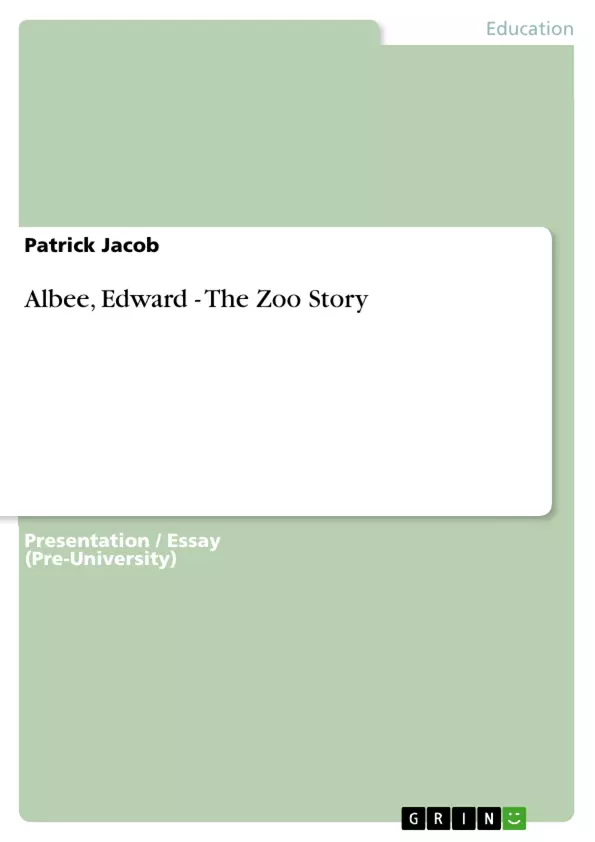What is the structure of "The Zoo Story"?
The play is divided into three parts: 1) Jerry gets to know Peter (pages 11-21), 2a) Jerry's living conditions and past; b) the story of Jerry and the dog (pages 22-36), and 3) Jerry provokes Peter, leading to Jerry's death (pages 36-end).



